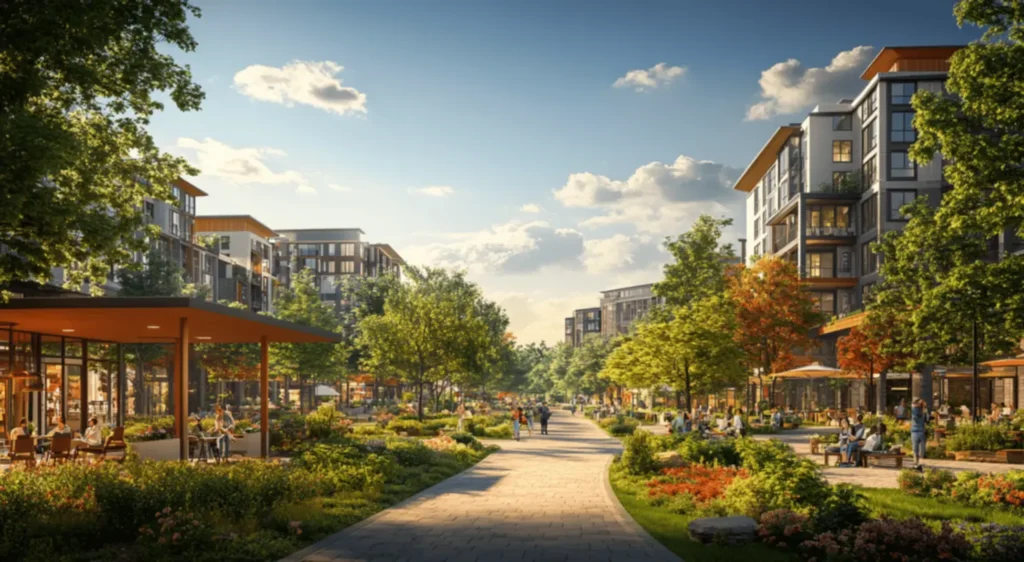Introduction to Urban Planning Concepts
Urban planning concepts is this ever-evolving field that really shapes the way our communities function, ultimately influencing how we live, work, and interact with one another. It’s about blending a bunch of principles—think smart growth, mixed-use development, and sustainable land use—so urban planners can craft environments perfectly suited to meet the diverse needs of residents.
And, honestly, this does more than just boost the quality of life; it also paves the way for economic growth while keeping our planet’s health in check.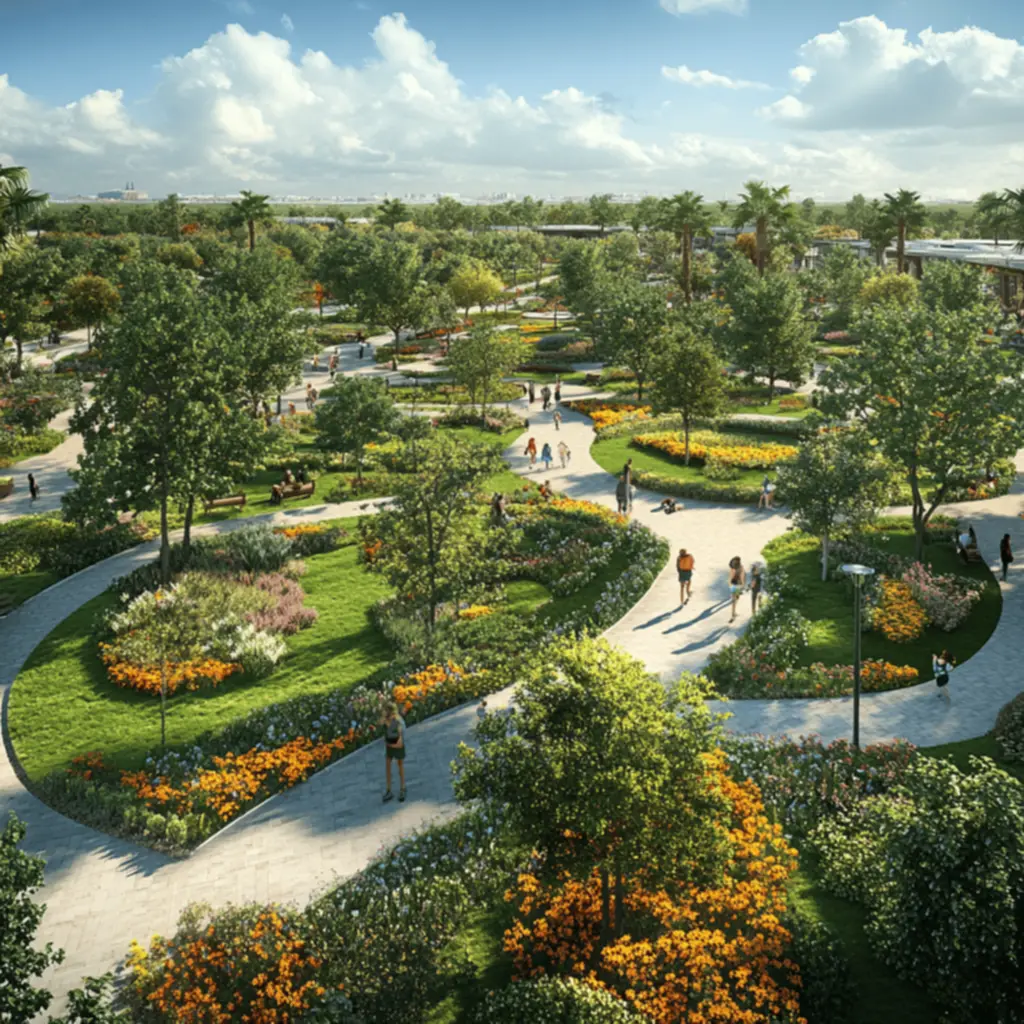
In the fast-paced urban environment we find ourselves in today, having effective planning strategies is more important than ever. Whether it’s a sprawling metropolis or a cozy small town, urban planning concepts are crucial in tackling issues like traffic jams, pollution, and affordable housing. As someone who’s a bit of a home enthusiast and loves interior decoration, I cannot help but notice the profound impact of these planning principles on our living spaces. So, in this article, I’m excited to share my thoughts and observations on how careful design can help us build better cities for everyone.
By diving into various urban planning concepts, we’ll get a clearer picture of how they affect our everyday lives. Ever wondered how smart growth initiatives can create those walkable neighborhoods we all dream about? Or how mixed-use developments can bring some life and energy to our community interactions? Let’s take the plunge into these concepts and see how they’re actually shaping our urban landscapes.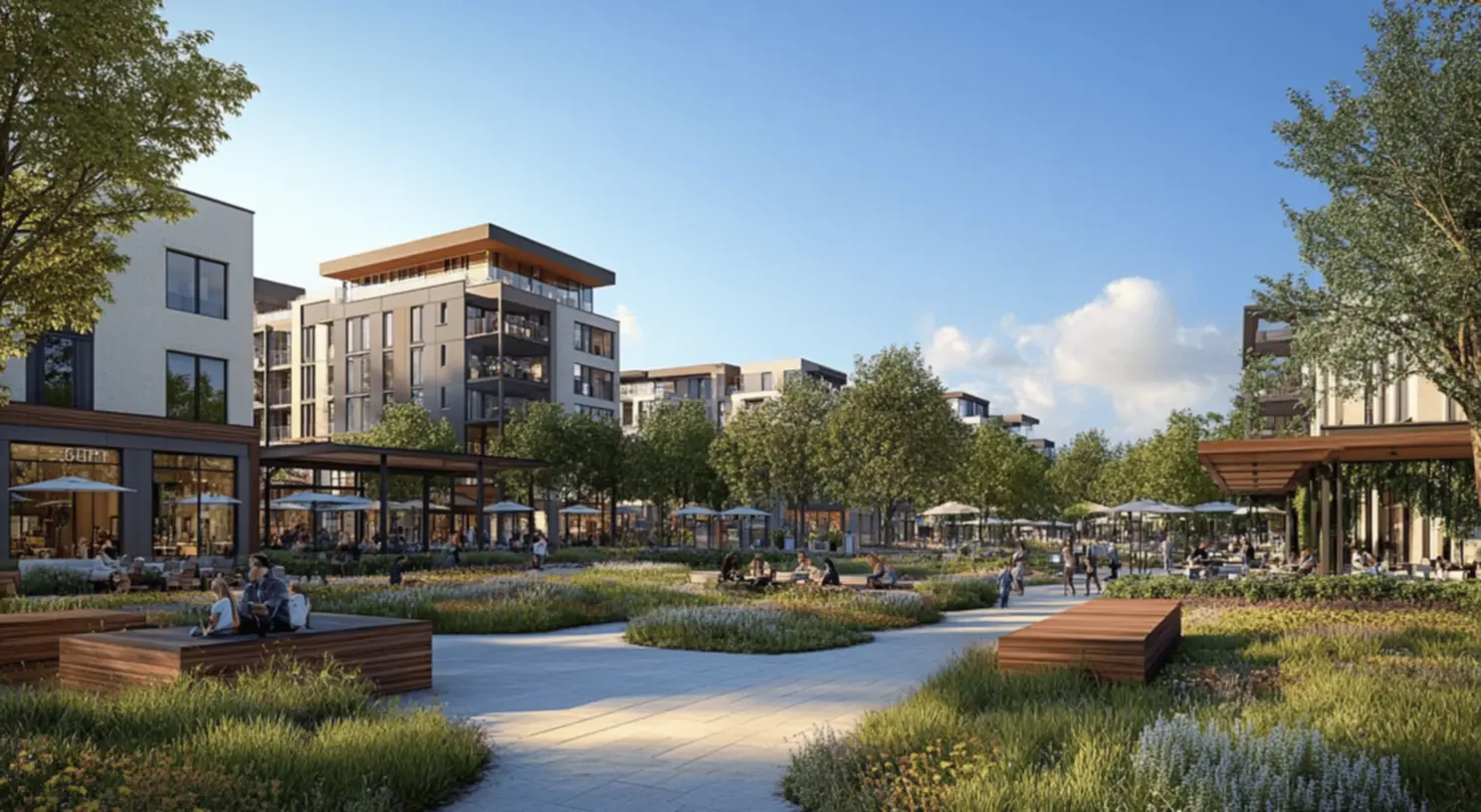
Understanding Smart Growth in Urban Planning
Smart growth isn’t just a buzzword; it’s a thoughtful approach to urban planning that champions sustainable and efficient land use. Imagine communities that are compact and easy to walk around in—this reduces our dependence on cars, which in turn cuts down traffic and pollution. At the heart of smart growth are principles that promote mixed-use development, meaning that you have homes, shops, and parks all within reach of each other. It’s like living a more integrated, community-focused lifestyle.
Research tells us that cities that embrace smart growth often see higher levels of community engagement. When neighborhoods are designed to be pedestrian-friendly—complete with essential services like grocery stores and parks nearby—residents are more inclined to meet and mingle, creating connections that foster a true sense of belonging. Picture this: your favorite coffee shop or local park just a short walk from your door—that’s smart growth in action!
From what I’ve noticed, embracing smart growth doesn’t just make our neighborhoods more livable; it also adds that touch of aesthetic appeal that draws us outside. Think of picturesque streets lined with trees, parks that invite people to relax, and beautifully crafted buildings that catch the eye. These elements make us want to step out, engage in outdoor activities, and lead healthier lifestyles.
Key Principles of Smart Growth
The key principles of smart growth really cover a lot of ground. First off, prioritizing infill development means making good use of the urban land we already have instead of sprawling into the countryside. This not only protects our essential open spaces but also revitalizes underutilized areas. Secondly, designing vibrant public spaces can spark community interaction, providing places where social gatherings and events can unfold.
Moreover, it’s super important to implement policies that push for affordable housing right in the heart of urban areas. Smart growth also places a strong emphasis on effective public transportation, making it easier for residents to get around without needing a car. Overall, these principles aim to cultivate harmonious, sustainable communities that benefit everyone involved.
The Importance of Mixed-Use Development
Let’s talk about mixed-use development—it’s absolutely crucial in the realm of modern urban planning. This approach weaves together residential, commercial, and recreational spaces into one seamless experience. What this does is not just amplify convenience for residents but also sparks the creation of lively community hubs. As someone deeply fond of decor, I truly admire how well-thought-out mixed-use developments contribute to the overall vibe and attractiveness of an area.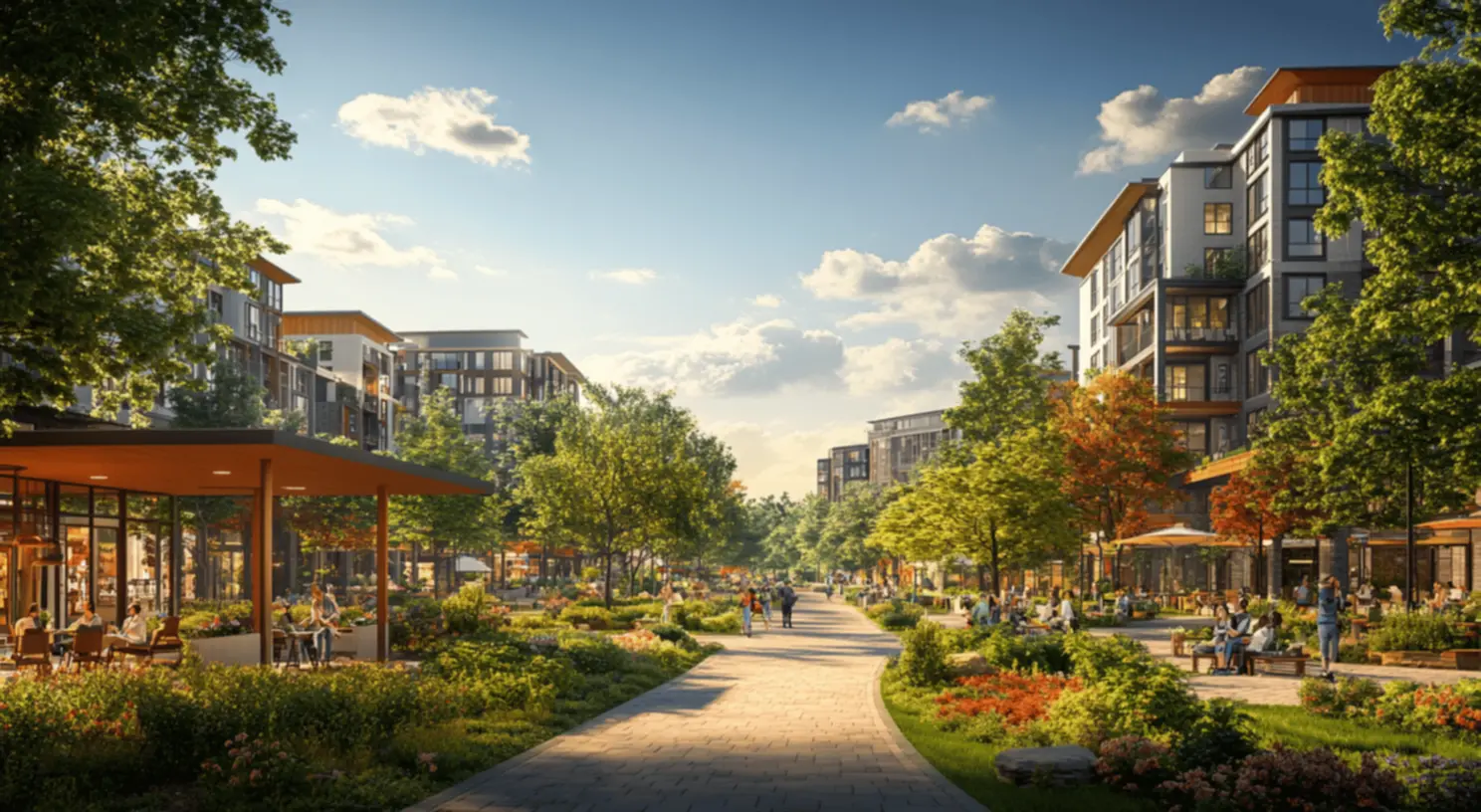
Picture living in a neighborhood where your go-to shops, charming cafes, and beautiful green spaces are just a quick walk away. This kind of setup cuts down on car dependency while encouraging healthier lifestyles. Oh, and let’s not forget that mixed-use spaces boost the local economy by attracting new businesses and visitors.
Importantly, mixed-use developments can address housing shortages too. By integrating residential units into commercial areas, cities can offer a variety of housing options while optimizing land use. This contributes to vibrant, inclusive communities that embrace a mix of demographics and life choices.
Benefits of Mixed-Use Development
The perks of mixed-use development go beyond mere convenience. First, it promotes walkability, nurturing healthier lifestyles while simultaneously easing traffic woes. Plus, these dynamic spaces enhance the local economy by creating diverse business opportunities. It’s pretty common to see a bustling café packed with patrons while unique boutiques thrive just down the street.
These neighborhoods do something wonderful: they create a sense of belonging. They foster environments where folks of all ages can engage with one another, building stronger community ties. This is especially important for families looking to establish stability and interaction for their kids.
Enhancing Walkability in Urban Areas
When it comes to successful urban planning, walkability is a key ingredient that significantly boosts quality of life. By promoting walkable environments, we encourage healthier habits, ease traffic congestion, and nurture social interactions among residents. As someone who’s passionate about curating welcoming spaces, I’ve seen how walkable neighborhoods can really transform a community for the better.
Integrating sidewalks, crosswalks, and designs focused on pedestrians makes it much easier for everyone to move around without relying solely on cars. In cities prioritizing walkability, there’s often a noticeable drop in pollution and traffic-related incidents. Walking not only benefits us individually; it adds to the vibrancy of the community as a whole.
Plus, enhancing walkability can significantly boost property values. When neighborhoods are designed with pedestrians in mind, they attract individuals looking to lead active lifestyles. This demand translates into more investment and development opportunities, which ultimately enriches the entire community. Exploring how urban design interconnects with walkability reveals the lasting impact that thoughtful planning can have.
Strategies for Improving Walkability
There are some smart strategies that can really elevate walkability in urban areas. To start, creating interconnected street networks allows pedestrians to navigate safely and easily. It’s also vital to incorporate green spaces and parks within residential neighborhoods, offering cozy spots for relaxation and recreation. Another effective tactic is to implement traffic calming measures like speed bumps or curb extensions to prioritize pedestrian safety.
In addition to these strategies, local governments should aim to enhance public transportation options, making it seamless for residents to meld walking with their commutes. As communities adopt these strategies, walkability becomes a foundational element of successful urban planning, promoting healthier living and fostering deeper connections among residents.
Public Transportation Integration: A Key Urban Planning Strategy
Public transportation plays a vital role in sustainable urban planning, providing accessible mobility options for everyone. By weaving public transport systems into urban design, cities can encourage the use of mass transit, which helps cut down on car dependency and reduces congestion. When efficient transit options are prioritized, we pave the way for a more environmentally friendly way of living.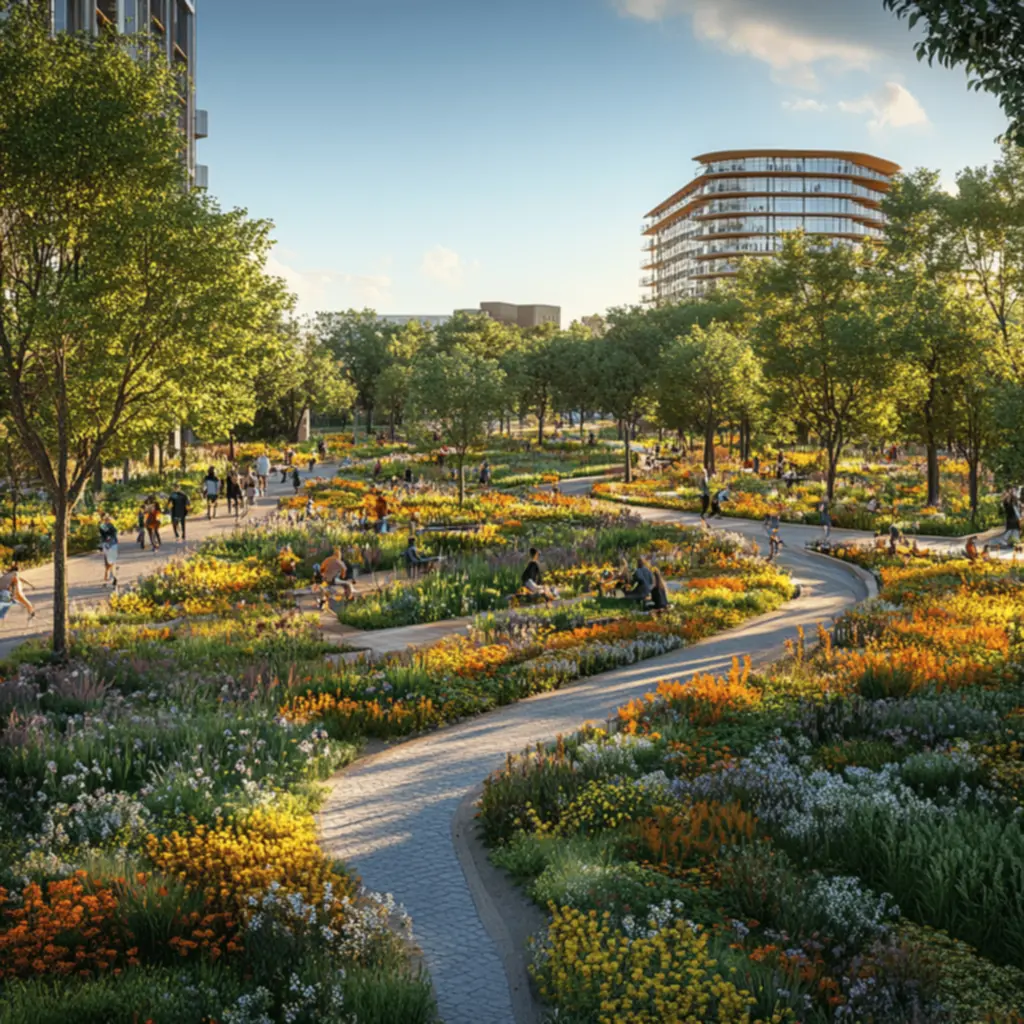
Urban planners have to think about how transportation systems mesh with existing neighborhoods. For instance, linking bus and train stations with pedestrian paths or bike lanes can create smooth transitions for residents. This not only improves daily commutes but also encourages more people to use public transit, which contributes to a significant reduction in emissions.
From what I’ve observed, integrating public transportation can breathe new life into urban areas and reshape local economies. With reliable transit options available, businesses thrive, and communities become more interconnected. This sense of interconnectedness encourages collaboration among residents, turning urban landscapes into vibrant living hubs.
Benefits of Public Transportation Integration
The integration of public transportation comes with a host of benefits. First off, it’s a win for environmental sustainability, lowering vehicle emissions and reducing our reliance on fossil fuels. Secondly, it increases community accessibility, making it simple for residents to get to essential services, jobs, and leisure activities.
Another positive aspect is that effective public transportation can tackle housing affordability issues. By nurturing transit-oriented communities, cities can offer affordable housing options close to job centers, making it much easier for families to prosper. These community planning efforts ultimately lead to a more equitable urban environment where everyone feels included.
The Role of Green Spaces in Urban Design
Green spaces are a must-have in urban design, significantly impacting the physical and emotional well-being of residents. Parks, gardens, and green corridors not only beautify neighborhoods but also serve as vital spaces for recreation, relaxation, and social get-togethers. Seeing nature being woven into our urban settings to create healthier environments is truly inspiring.
Research has consistently shown that access to green spaces positively influences mental health by decreasing stress and promoting physical activity. When parks are part of a community, residents are more likely to engage in outdoor activities, leading to healthier lifestyles. Personally, I’ve found that spending quality time in nature lifts my spirits and builds a sense of togetherness within the community.
Moreover, green spaces provide essential ecosystem services, such as improving air quality and mitigating urban heat. These benefits extend beyond individual wellness, contributing to the overall sustainability of urban areas. Therefore, it’s absolutely crucial for urban planners to prioritize the inclusion of green spaces, ensuring that nature remains an integral part of our cities.
Designing Effective Green Spaces
Creating effective green spaces takes thoughtful planning and community involvement. First, understanding what the community actually needs is vital for designing areas that truly resonate with residents. This might mean adding walking trails, playgrounds, or picnic spots to encourage engagement.
Secondly, promoting biodiversity should be a top priority in our urban landscaping efforts. By planting native species, cities can support vibrant ecosystems that benefit wildlife while enhancing the overall health of our environment. Lastly, making green spaces accessible to everyone fosters inclusivity, allowing all residents to reap the benefits of these essential areas.
Sustainable Land Use Practices for Modern Cities
Sustainable land use practices are essential in urban planning as they emphasize the efficient use of resources while minimizing environmental impact. By prioritizing compact, high-density neighborhoods, we can reduce urban sprawl and safeguard natural habitats. Implementing these strategies allows cities to thrive while fostering a balanced ecosystem and enhancing residents’ quality of life.
In my own interior design projects, I make a point to embrace sustainability, recognizing how key it is in shaping our surroundings. For example, using energy-efficient materials like reclaimed wood and eco-friendly paints contributes to more sustainable living. These practices can also be scaled up in urban planning to foster cohesive and eco-conscious communities.
Additionally, investing in sustainable infrastructure—like green roofs and permeable pavements—can help mitigate urban heat effects and improve drainage systems. These efforts not only help cities adapt to climate change but also work to preserve their livability. It’s crucial for both urban planners and residents to acknowledge the significance of sustainable land use in the context of modern city design.
Examples of Sustainable Land Use Practices
We can look to thriving cities for examples of sustainable land use practices. One effective approach is implementing zoning regulations that encourage mixed-use developments, maximizing land efficiency. Places like Portland and Copenhagen have effectively adopted these rules, leading to vibrant, walkable neighborhoods.
Another great example is integrating agricultural practices within urban settings. Community gardens and urban farms don’t just provide fresh produce; they also engage and educate the community. Cities around the world are beginning to see the importance of preserving agricultural land even within urban boundaries.
In conclusion, sustainable land use practices are absolutely vital for building resilient cities. By applying effective strategies, urban planners can ensure that growth and sustainability go hand in hand, creating communities that are both livable and environmentally responsible.
| Urban Planning Concept | Description | Benefits |
|---|---|---|
| Smart Growth | Approach that emphasizes sustainable and efficient land use. | Promotes community engagement and reduces dependence on cars. |
| Mixed-Use Development | Integration of residential, commercial, and recreational spaces. | Enhances walkability and economic vibrancy. |
| Walkability | Designing urban spaces that prioritize pedestrian access. | Improves health, reduces pollution, and increases property values. |
| Public Transportation | Systems that improve mobility and reduce car dependency. | Enhances accessibility and supports sustainable growth. |
| Green Spaces | Parks and natural areas integrated into urban design. | Boosts mental health and improves urban ecosystem quality. |
Case Studies: Successful Urban Planning Initiatives
Taking a closer look at successful urban planning initiatives can provide us with valuable lessons and inspire innovative approaches. Cities that embrace smart, thoughtful design often serve as models for others, showing how effective planning can significantly improve residents’ lives. For instance, Curitiba, Brazil, implemented a fantastic bus rapid transit (BRT) system that revolutionized urban mobility and dramatically eased traffic congestion.
Then there’s the rejuvenation of New York City’s High Line, an elevated park that used to be an abandoned railway line. It’s become a prime example of urban regeneration by showcasing how repurposing existing spaces can create accessible green areas while boosting economic development.
Closer to home, cities like Austin, Texas, are leaning into mixed-use development, providing diverse housing options alongside lively commercial offerings. These successful examples highlight how urban planning initiatives can invigorate local economies and foster deeper community connections, urging us to imagine what our neighborhoods could look like with similar visionary planning.
Lessons Learned from Case Studies
The insights gleaned from successful urban planning initiatives are multifaceted. First off, cooperation among stakeholders—government officials, developers, and residents—is fundamental to craft inclusive and efficient designs. Prioritizing open spaces and green design elements can also immensely enhance urban livability.
Moreover, understanding the context is crucial. Each city possesses unique cultural, historical, and ecological features that should guide planning efforts. By appreciating these characteristics, urban planners can create spaces that feel authentic and resonate with local residents, thereby cultivating a shared sense of pride.
Ultimately, analyzing these successful case studies empowers us to envision better tomorrows for our communities. By learning from what works and embracing fresh concepts, we can collectively shape urban landscapes that are vibrant, inclusive, and fully alive.
The Impact of Urban Planning on Quality of Life
Urban planning plays a pivotal role in shaping quality of life, impacting various facets of daily living. Thoughtful design contributes to convenience, accessibility, and overall happiness within communities. By focusing on crucial aspects like walkability, mixed-use development, and green spaces, urban planners actively promote healthier, more engaging environments for everyone.
As a homeowner, I’ve noticed how strategically planned neighborhoods can nurture a real sense of belonging. When residents have easy access to neighbors and essential services, it strengthens community bonds. By investing in good urban design, we can create inclusive spaces that catalyze social interaction and foster well-being.
On top of that, effective urban planning tackles critical issues like traffic congestion and pollution. By leaning into public transportation and sustainable land-use practices, cities can alleviate the negative impacts on the environment. Ultimately, these collective efforts improve the overall quality of life for residents, empowering them to thrive in their communities.
Measuring the Impact of Urban Planning
To truly grasp how urban planning affects quality of life, we need to look at specific metrics. Factors like air quality, walking distances to essential services, and levels of community engagement offer valuable insights into the effectiveness of planning efforts. Plus, regularly surveying residents helps to gather feedback that can inform tweaks and adjustments for future designs.
Cities can also study economic indicators—like property values and local business performance— to understand how urban planning initiatives impact overall community prosperity. Taking a holistic view of metrics can empower urban planners to make data-driven decisions that enhance quality of life effectively.
Traffic Management and Urban Planning Synergies
Traffic management strategies are crucial in urban planning, addressing issues of congestion, safety, and accessibility. By integrating smart traffic management solutions, cities can enhance mobility while minimizing adverse environmental effects. Thoughtful planning considers not only the flow of vehicles but also prioritizes pedestrian and cyclist safety.
A practical approach is to implement traffic calming measures, like speed bumps and narrower streets, to slow down traffic in residential areas. On top of that, giving precedence to dedicated bike lanes encourages alternative transportation options, promoting healthier lifestyles while easing traffic woes. I’ve seen firsthand how these strategies contribute to safer neighborhoods, improving overall quality of life.
Furthermore, harnessing technology in traffic management, such as adaptive signal control, can optimize traffic flow and slash delays. These solutions ensure that urban planning stays in sync with the constantly changing dynamics of city life, promoting safety, accessibility, and sustainability.
Best Practices in Traffic Management
Best practices in traffic management include leveraging data-driven approaches to monitor traffic patterns and adapt strategies based on real-time information. In addition, collaboration between cities and local agencies can help forge comprehensive plans that specifically address community needs.
Also, integrating public transportation systems into traffic management practices enhances mobility options for residents. Cities should keep promoting safe public transit while investing in infrastructure that supports walking and biking. By embracing these best practices, urban planners can create efficient transportation networks that prioritize the quality of life for all residents.
Addressing Pollution Through Thoughtful Urban Design
Urban design significantly impacts pollution levels and environmental quality. With a focus on green spaces, sustainable practices, and solid public transportation, cities can take action to tackle urban pollution. Thoughtful planning can lead to healthier communities by improving air quality and minimizing noise pollution, crafting a friendlier urban environment.
I always tend to notice that neighborhoods rich in greenery feel fresher and more inviting. Green spaces act as natural air purifiers, soaking up pollutants and delivering clean air to residents. That’s why urban planners must prioritize creating parks and planting trees in their designs for a healthier ecosystem.
Furthermore, encouraging public transportation and boosting active modes of transport, like walking and biking, can dramatically reduce vehicle emissions. By building better alternatives, urban planners contribute to a greener, healthier future for both current residents and generations to come.
Strategies for Reducing Urban Pollution
There are plenty of strategies that can effectively reduce urban pollution. First, by promoting electric vehicles and establishing charging infrastructure, cities can significantly lower emissions. Also, instituting regulations to curb industrial emissions would greatly help protect our air quality.
Moreover, investing in green infrastructure, such as green roofs and permeable pavements, improves stormwater management and minimizes runoff. These strategies enable cities to create resilient environments while conserving natural resources. All in all, embracing these approaches will help us shape cleaner, healthier urban spaces for everyone.
Housing Affordability: Challenges and Solutions in Urban Areas
Housing affordability is one of the significant challenges that urban areas face right now. With living costs climbing and wages stagnating, it’s getting tougher for residents to find housing within their budget. Urban planners need to face this head-on with some thoughtful policies and creative solutions to keep communities accessible for all income levels.
Having seen the fallout of the lack of affordable housing firsthand, I know how much it can affect families and neighborhoods. When folks are forced to allocate a significant chunk of their income to housing, it inevitably drags down their quality of life. Urban planners have got to focus on mixed-income housing and affordable options right within communities to help counteract that.
Additionally, promoting policies that incentivize affordable housing development—like tax credits and favorable zoning regulations—could go a long way toward mitigating this crisis. By collaborating with developers and other stakeholders, cities can create sustainable solutions that support housing affordability without sacrificing the vibrancy of their communities.
Innovative Approaches to Housing Affordability
Some innovative strategies can really tackle housing affordability in urban areas. For one, repurposing vacant properties for affordable housing can optimize land use while adding vital housing options. On top of that, including affordable units in larger developments fosters inclusivity and diversity, enriching the entire community.
Also, cities that invest in community land trusts empower residents, giving them a stronger voice in housing and land decisions. This model helps keep housing affordable for future generations while fortifying community connections. By deploying these fresh strategies, urban planners can confront housing affordability challenges in meaningful ways.
The Future of Urban Planning: Trends and Innovations
The future of urban planning looks pretty bright, filled with intriguing possibilities. As cities continue to change and develop, innovative trends and technologies are transforming how we approach urban design. From smart city initiatives to sustainable development, the upcoming years hold the promise of maximizing efficiency and livability—making our urban experiences even better.
Emerging technologies like data analytics and smart infrastructure give urban planners the tools to make informed, real-time decisions. This optimizes public services and keeps residents engaged in the planning dialogue. As someone with a flair for decor, it’s exciting to see how technology can lead to more personalized and connected living environments.
Plus, the push for eco-friendly and sustainable practices will undoubtedly continue to impact urban planning. Cities that prioritize green design choices and sustainable materials won’t just enhance residents’ quality of life; they’ll also be doing their part to combat climate change. As we explore these upcoming trends, it’s crucial to continuously ensure that community needs stay front and center in urban planning.
Key Trends Shaping the Future of Urban Planning
There are a few key trends that are shaping the future of urban planning as we speak. Firstly, the shift toward remote work is changing the game for city design, leading to an increased focus on crafting spaces that accommodate flexible lifestyles. Secondly, incorporating nature-based solutions within planning practices addresses urban challenges while promoting better environmental resilience.
What’s more, the growing emphasis on social equity in urban design is ensuring that every voice in the community is heard. Through collaborative engagement and participatory planning efforts, cities are actively working to foster inclusive, diverse neighborhoods. By staying attuned to these trends, urban planners can curate vibrant environments where everyone can thrive.
Community Engagement in Urban Planning Processes
Community engagement is seriously a backbone of effective urban planning—allowing residents to shape their neighborhoods actively. Including community members in the planning process enables urban planners to develop designs that align with the unique needs and desires of the people. This collaboration results in stronger community bonds and a richer sense of pride among residents.
In my experience, when communities are engaged, they nurture a genuine interest in the results of urban planning initiatives. This hands-on participation builds that feeling of ownership and creates solid relationships between residents and city officials. Actively seeking feedback through surveys, workshops, and public meetings paves the way for more inclusive planning approaches.
Moreover, engaging with the community often uncovers insightful viewpoints and localized knowledge that planners might overlook. Understanding local history, culture, and social dynamics can help create spaces that resonate meaningfully with residents. Ultimately, making community input a priority in planning results in effective, sustainable designs that significantly elevate the quality of life.
Strategies for Effective Community Engagement
To ramp up community engagement in urban planning, there are several strategies that can really make a difference. First, employing creative outreach methods—like interactive workshops or using online platforms—can spark participation from a diverse range of demographics. Secondly, ensuring residents have access to easily digestible information about planning processes guarantees that they can engage meaningfully.
Establishing community advisory boards is another excellent approach, as they provide ongoing representation and input from residents. These boards become crucial links between the people and city officials, helping keep community voices front and center in decision-making. By implementing these strategies, urban planners can nurture a culture of collaboration, ultimately leading to better-designed neighborhoods.
Measuring Success: Key Metrics in Urban Planning
Evaluating the success of urban planning initiatives is essential for driving continuous improvement and ensuring community satisfaction. Key metrics should encompass various aspects of city life, covering everything from economic performance to environmental sustainability. By using these metrics, urban planners can assess how effective their strategies are and make informed decisions for the future.
For example, keeping an eye on property values and local business performance can shed light on how urban planning moves the needle for local economies. Additionally, tracking environmental factors, like air and water quality, offers crucial information about the effectiveness of sustainability initiatives. As someone who values data-driven decision-making, I understand the necessity of keeping tabs on outcomes.
Furthermore, community feedback is a key metric for evaluating urban planning success. Conducting surveys and fostering dialogue with residents helps planners gauge how well they’re meeting community needs and pinpoint areas for improvement. By using a comprehensive approach to measuring success, urban planners can craft vibrant, thriving communities that uplift the quality of life.
Key Metrics to Consider in Urban Planning
When assessing success in urban planning, there are some key metrics to keep an eye on. For starters, evaluating walkability and accessibility gives insight into how easily residents can navigate their neighborhoods and access essential services. Additionally, analyzing demographic trends helps urban planners stay ahead of changes in population and housing needs.
Monitoring public transportation usage can reveal how effective transportation strategies are working in the real world. Lastly, collecting community satisfaction indicators through surveys and feedback is crucial for understanding how residents experience these planning initiatives. By keeping these essential metrics in mind, urban planners can work to ensure their initiatives adapt to the changing needs of communities.
Conclusion: The Path Towards Better Urban Living
To wrap it all up, urban planning concepts have such a fundamental role in shaping our communities and touching every aspect of our daily lives. By embracing principles like smart growth, mixed-use development, and sustainable land use, urban planners can create spaces that truly enhance the quality of life for everyone. Collaboration among city officials, residents, and stakeholders is crucial for crafting urban environments that work for all.
Peering into the future, we can’t overlook the importance of community engagement coupled with forward-thinking strategies. By putting residents’ needs at the forefront and fostering collaboration, we can transform our cities into inclusive and sustainable spaces that support a variety of lifestyles. For all of us who are passionate about home design and creating inviting spaces, understanding urban planning concepts really enriches our appreciation for the environments we call home.
At 17Vibes, it’s my belief that thoughtful design and urban planning can come together beautifully to create better living spaces for everyone. By investing in our communities and taking on innovative approaches, we can lay the groundwork for healthier, happier urban environments that truly benefit us all. Remember, the journey toward improved urban living begins with each and every one of us—let’s take those steps together!
Explore more about modern interior design concepts to see how they fit into the larger scope of urban planning.
